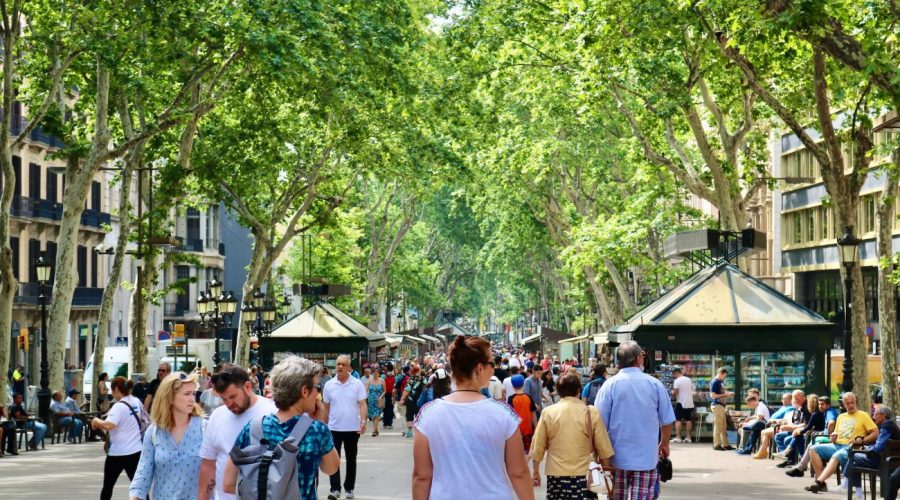How to Plan a Trip to Spain and Italy
Planning to visit Spain and Italy could be a fun and unforgettable experience. These two countries feature a heady mix of history and culture, as well as stunning vistas. Whether it’s odysseying ancient ruins, building sandcastles on stunning beaches or just enjoying the taste of delicious food, in this guide, we are going to help you to have the picnic of your dreams by planning your dream trip.
1. Determine Your Itinerary
Before getting into the details of each country, it makes sense to plan out the length of your trip and a list of cities you want to see. Both Spain and Italy are countries that offer many different things to visitors, so you really need to know what operates for you. Take into account the cultural sites, natural sites and community-based experiences that you prefer for a personal itinerary.
1.1 Choosing Spanish Destinations
If you are coming to Spain, top destinations include Barcelona, Madrid, Seville & Valencia. Each place is all its own differing experience, from Gaudi’s architectural wonders in Barcelona to Seville’s flamenco scene to life it self. Research these destinations and choose the ones that fit the bill.
1.2 Selecting Italian Destinations
In Italy, Rome, Florence, Venice and Naples are the most well-known destinations. Italy’s Capital Rome is famous for the ancient ruins, its own hub Florence has the most stunning Renaissance art, Venice has enchanting romantic canals and Naples offers the gateway to the stunning Amalfi Coast. Thought about which cities will be of most relevance to you.
2. Research Visa Requirements
Depending on your country of origin, you might need a visa to travel to Spain and Italy. Verify the visa requirements in advance to have a trouble-free entry to both countries. You need to get information on the visa regulations from the respective embassies or consulate offices, or check their own websites for the latest information.
3. Book Flights and Accommodations
Once you have your schedule locked in, it’s time to look for flights and hotels. You can use travel search engines and get in touch with travel agents to compare prices and locate the cheap airline. To pick the right place to stay, there are just a few things to consider like, where it is, what, things you want when hanging out and reviews.
4. Plan Your Activities
Create a list of sights and things you can find to do in each town. Take advantage of some research and pre-purchase tickets for popular locations such as the Sagrada Familia in Barcelona or the Colosseum in Rome. This will prevent you from lining up for a long time and will allow you to have a more enjoyable trip.
5. Pack Smartly
Make sure to pack accordingly for your climate and activity scheduled. Spain and Italy have different climates, pack according to the season. Walking shoes are a must-comfortable ones as there is much to see and enjoy enshrined within the historic sites and quaint old neighborhoods that you will be walking on. Please remember to check the list does travel documents, medication, adapters for electronics.
6. Learn Basic Local Language
Though English is widely spoken in tourist hot spots you will be able to improve your travel experience by leaning a little Italian and Spanish. Locals appreciate it and also comes in handy navigating through non-touristy areas. Laisse parler simple avec des phrases telles que “bonjour”, “merci” et “excusez-moi.”
7. Prepare Your Finances
Before you leave, let your bank or credit card company know where you are heading so they don’t flag it as suspicious and prevent card payments while you’re on holiday. It is also good to have some cash in local currency for small purchases and companies that do not accept cards. Research exchange rates and see if you can get cash out at ATMs in Spain and Italy.
8. Get Familiar With Local Customs Etiquette
Each country has its own traditions and rules of etiquette, so take a few minutes to do your research on the local customs. For instance, in Spain, it’s the rule of thumb to greet with a kiss on the cheek, in Italy people are used to ‘buon appetito’ before any meal. Knowin’ these cultural pitfalls makes for more intersting travel stories.
9. Stay Safe and Insured
Although Spain and Italy are generally safe for tourists, it is always better to be careful. Keep your belongings safe, watch out for your environment, and comply with any safety regulations that have been given by local authorities or your accommodation. Moreover buy a travel insurance, to keep you safer from any unexpected event.
10. Immerge into Local Culture
Ultimately don’t forget to experience the local culture and attempt the regional local food. Savor Spanish tapas or paella or dig into authentic Italian pizza and gelato. Meet the locals, attend local events, independently wander off-the-beaten-path neighborhoods and enjoy the authentic holiday.
By following these tips you will be ready to organize the trip to Spain and Italy. Don’t forget to leave some room for spontaneity too, and you’ll have a journey that is truly priceless. Bon voyage!
Table of Contents



